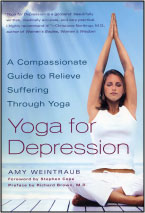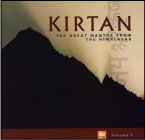Infinite Life:
Seven Virtues for Living Well
Robert Thurman
Riverhead Press 2004
 In Infinite Life, Columbia professor Robert Thurman proposes that we live an
eternal life – an existence that persists through infinite deaths and
rebirths. Because our actions in this life determine the character of our next,
we must “take each moment with the utmost concern, become passionately
engaged with each being.” Thurman divides his book into chapters based
on seven key principles – wisdom, generosity, justice, patience, creativity,
contemplation, and the art of infinite living. He encourages the reader to develop
each quality, offering meditations as well as Buddhist folk tales and personal
anecdotes.
In Infinite Life, Columbia professor Robert Thurman proposes that we live an
eternal life – an existence that persists through infinite deaths and
rebirths. Because our actions in this life determine the character of our next,
we must “take each moment with the utmost concern, become passionately
engaged with each being.” Thurman divides his book into chapters based
on seven key principles – wisdom, generosity, justice, patience, creativity,
contemplation, and the art of infinite living. He encourages the reader to develop
each quality, offering meditations as well as Buddhist folk tales and personal
anecdotes.
Thurman promotes the philosophy that all of life is interconnected, stating
that “We cannot liberate just ourselves from suffering, because it is
impossible to achieve fully perfect bliss if anyone is excluded from it.”
He offers a translation of Shantideva’s Bodhisattva Vow in the last chapter,
and encourages readers to adopt it and devote their lives to assisting others.
In his anecdotes, Thurman reveals himself as reassuringly flawed. He offers
his most helpful advice in the Patience chapter, possibly because he admittedly
has problems with this quality. He substantiates his ideas with a few studies,
including one suggesting that the amount of self-reference in a person’s
speech – rather than personality type – determines the likelihood
of heart disease.
However, I found Thurman’s book marred with generalizations of American
culture. He depicts Westerners as materialistic beings who cannot imagine life
beyond the next acquisition. Thurman assumes the Buddhist concept of selflessness
to be completely beyond most Americans, whom he imagines to cling desperately
to a sense of self-importance while believing themselves doomed to a meaningless,
brief existence. In fact, much of Infinite Life comes across as a rant against
a cartoonishly envisioned America full of people walking around in a “zombielike
state of unawareness.” When not voicing clichés, I find that Thurman
offers rather banal advice. He urges us to not gossip, to eat without slurping
and to buy Christmas presents early.
As Thurman advocates for less military spending and more time away from the
television, I cannot help but feel that he is wasting his knowledge. Given that
most of his readers probably agree with his views of modern culture, Thurman
might better spend his time delving into Buddhist doctrine and expounding on
its more difficult aspects. Infinite Life might be helpful for those seeking
guided meditations or words of encouragement as they strive to gain awareness.
However, the bitterness of the author detracts from his arguments and makes
Infinite Life a more simplistic read than most people might find useful. –
Lauren Hauptman
back to top
Yoga for Depression:
A Compassionate Guide to Relieve Suffering through Yoga
Amy Weintraub
Broadway Books 2004
 Last winter, I was hospitalized for depression. I felt like my life was beyond
hope and all I could see before me was darkness and more darkness. I barely
survived a year of setbacks and failures, and I was uncertain what I was supposed
to learn. Perhaps, my therapist suggested, you were supposed to learn that you
have depression and you’ll be on medication for the rest of your life.
This made me feel even more depressed.
Last winter, I was hospitalized for depression. I felt like my life was beyond
hope and all I could see before me was darkness and more darkness. I barely
survived a year of setbacks and failures, and I was uncertain what I was supposed
to learn. Perhaps, my therapist suggested, you were supposed to learn that you
have depression and you’ll be on medication for the rest of your life.
This made me feel even more depressed.
Amy Weintraub, a yoga instructor and writer, was also told by her therapist
that she had “empty pockets” and would simply have to accept that
she’d never be happy. In Yoga for Depression, Weintraub talks frankly
and openly about her experiences with depression. She shares how she has recovered
from depression through her own practice of yoga and describes how she has used
this process to help her students. The book is flavoured with students’
stories of how they have healed with the help of yoga.
In clear, easy to understand language without a lot of medical jargon, Weintraub
explains the causes, types and current medical treatments of depression. She
also stresses the spiritual side of yoga, how this can bring meaning and joy
to a depressed person’s life. As well as pranayama exercises and Hatha
Yoga poses, Weintraub discusses meditation, mindfulness and Sri Sri Ravi Shankar’s
Art of Living course.
Since being discharged from the hospital, I have been on anti-depressants
and attending outpatient therapy groups. I have also started a regular yoga
practice. “Empower” is an overused word, but there is no other way
to describe Yoga for Depression. Since I have started a daily routine of yogic
breathing exercises and asanas, I have felt empowered to deal with my depression,
as well as other aspects of my life. Weintraub has set out a means for me to
take my mental health and happiness into my own hands, without relying solely
on doctor-prescribed treatments.
Yoga for Depression is written with compassion and empathy. Weintraub’s
voice is gentle and understanding, and the clear language does not intimidate
or overwhelm me. She doesn’t promise a cure, but prescribes ways to manage
depression and shows how practising yoga can help take away some of the pain.
I’m not about to throw away my medication or skip therapy, but I’m
realizing that I can find my own source of inner joy and light. – Roseanne
Harvey
back to top
Will Yoga & Meditation Really
Change my Life?
Stephen Cope, ed.
Storey Publishing 2003
Many of us find it difficult to align the notion of a spiritual life with the
day-to-day obligations of school, family and work. In Stephen Cope’s Will
Yoga & Meditation Really Change my Life? the author addresses these challenges
through a series of intimate interviews with twenty-five prominent American spiritual
practitioners. Cope, a senior Kripalu Yoga teacher, is intent on finding out how
his fellow aspirants have achieved a successful balance between the spiritual
and the everyday in their personal journeys toward peace and understanding.
The table of contents reads like a who’s who of the American contemplative
practice circuit. Many of Cope’s interview subjects were influential in
the progressive yoga movement of the seventies, which introduced the yogic path
to North Americans. Baby boomers who remember the “heady days of the early
1970s, when yoga and meditation were exotic new birds” will find Yoga &
Meditation especially pertinent, as the book reintroduces us to the pioneers who
have made yoga an integrated part of their lives over the course of the last thirty
years.
From Larry Yang’s bittersweet coming to terms with encounters of cultural
prejudice to the moving, tragic account of Esther Myers’ battle with cancer,
to Lilias Folan’s ascent to fame and fortune with her 1970s television program
“Lilias, Yoga, and You!” Yoga & Meditation traverses a wide range
of experiences. The book is conversational, personal, and a quick and enjoyable
read. It emerges with some universal insights into how best to use yoga to meet
life’s difficulties head-on and how to face life’s windfalls with
grace and humility. Cope has compiled a well-written investigation into the manifold
paths that lie open to those of us who wish to merge the secular with the spiritual,
one that suggests that the solution remains, as ever, with self-inquiry. Will
yoga and meditation really change my life? The answer lies within. – Michael
Wray
back to top
Kirtan:
The Great Mantra from the Himalayas
Various artists
Karuna 2004
| click here to listen |  |
 Listening to The Great Mantra from the Himalayas with eyes closed, it is easy
to imagine the scene in which the chanting sessions took place: devotees sitting
cross-legged on the ground, each with an instrument in hand, taking turns chanting
the mantra. In the background an occasional cough or whisper can be heard providing
the album with a very earthy, grounded feel in the midst of such spiritually
elevating music. There is nothing artificial about these songs; each resonates
with authenticity and pure emotion.
Listening to The Great Mantra from the Himalayas with eyes closed, it is easy
to imagine the scene in which the chanting sessions took place: devotees sitting
cross-legged on the ground, each with an instrument in hand, taking turns chanting
the mantra. In the background an occasional cough or whisper can be heard providing
the album with a very earthy, grounded feel in the midst of such spiritually
elevating music. There is nothing artificial about these songs; each resonates
with authenticity and pure emotion.
The goal of the yogic path of bhakti is to create a direct, unmediated link
between the devotee and the Divine. Love for the Divine can be expressed through
song, dance, art or other such creative and physical activities. Mantra chanting
is the means of devotion found on this album. Interestingly, Kirtan features
only four tracks, each comprised of the same three words, different renditions
of the maha-mantra: Hare Krishna, Hare Rama.
Mantras bestow power on the spiritual aspirant and the maha-mantra, or “great
mantra,” is considered especially powerful. The Bhagavad Gita says that
to chant the maha-mantra is to bring the Divine into its imminent form, thus
making the Divine directly available to the aspirant.
The album was recorded by Mitchell Markus and Krishna Das, both disciples
of Neem Karoli Baba. The songs are chanted by only a few bhaktas, or devotees,
at Neem Karoli Baba’s ashram. The striking simplicity of the music is
emphasized by the fact that the singers are accompanied by only two finger cymbals,
a hand drum and a harmonium. The focal point of the album is the weaving in
and out of the voices, which creates a mystical and textured feel. It becomes
hard to tell at what point one singer stops and another begins. The unbroken
quality of the entire album creates an illusion that the songs really go on
forever and the listener is being given only a taste of something eternal and
unending.
Each of these evocative tracks, individually but also as a whole, bring about
a sort of meditative state that makes the listener want simply to be absorbed
by the rhythmic chanting. There is something about this particular album that
rings of pure bhakti; in its underproduced, simple rhythms and melodies, it
becomes truly all about devotion and love for the Divine. – Monica Farrell
back to top